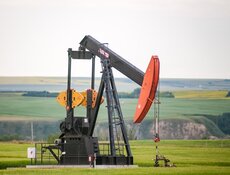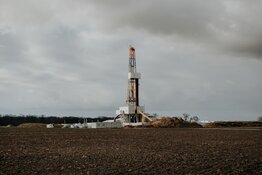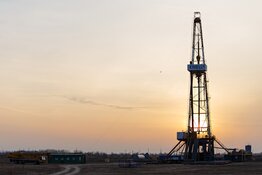The Energy Report: You work for a London-based research organization, and I imagine that you have a somewhat broader outlook on the oil and gas investment arena than most firms do in North America. Tell us a little about what you see ahead for energy markets.
Peter Dupont: Actually, some of the most interesting developments over the past year or two have taken place in North America. North America experienced a production increase of about one million barrels per day (1MMb/d) last year, whereas output dropped about .5MMb/d in other parts of the world. The North Sea was a major contributor to that. I see North America driving the global increase in output in 2013-2015.
I see the global supply/demand picture as pretty comfortable, barring natural, political or technical disasters. Those are always the wild cards. The demand side of the picture looks about the same as 2012, with a fairly subdued increase of perhaps 1MMb/d or a bit less. Demand growth is clearly constrained by recessionary or quasi-recessionary conditions in Europe and sluggish economic activity elsewhere in the OECD countries, including North America. China should see similar increases to recent years, maybe 3–4%. Overall, I don't think we're looking at particularly large increases in demand, which is just a function of the global economic situation.
TER: Politics are playing an increasingly important role in resource development. What do you see ahead that's significant in this respect?
PD: Politics and nationalism concerns have always been there to some degree since the formation of OPEC. That's inevitable.
TER: Are there any areas you're watching that could have some significant upsets as a result of government greed?
PD: I think that risk applies wherever oil is produced in significant quantities. It applies here in the North Sea, where you get changes in the tax regime that to some extent reflect movements in share prices. One reason why the U.S. and Canada are perceived as being attractive is you don't have the same degree of nationalism reflected in taxes. State production taxes and royalties vary, but the situation is vastly different compared to a place like Russia, where it's very easy to find the revenue completely consumed by taxes and local operating costs. It's no great surprise that the shale revolution has taken place in North America. In addition to geological conditions and the great fund of expertise available in the U.S. and Canada, the tax regime for oil and gas is more favorable than in other parts of the world. Even if you take into account the discounts on West Texas Intermediate (WTI) against Brent, there's still a pretty good margin after all the associated production costs and taxes are factored in.
Furthermore, North America is one of the most favorable places to operate now because of all the infrastructure and oil field services already in place. The terrain lends itself to oil field development. A lot of people are also very experienced in the business. Breakthroughs in tapping into shales certainly makes it one of the most interesting places to operate because the resources are there and you don't have major problems dealing with governments and tax regimes. At the end of the day, you've got to go where the oil is—or where you think it is.
TER: What other jurisdictions do you find interesting at this point?
PD: Shale probably has very big opportunities outside North America. The most interesting area, arguably, is Argentina, which has very substantial resources. There are political issues there, but you have to go where you think the opportunities are and Argentina is high on my list. Colombia is another shale opportunity. Australia has very big potential, with a combination of shale and conventional onshore opportunities.
China is also getting a lot of attention now. Theoretically, it has very large shale oil and gas opportunities, generally in tight reservoirs. The Chinese are very keen on tapping into shale gas to limit their import exposure and emissions.
Europe also has shale possibilities. Because of high population density, it's more difficult to operate onshore in Europe than in the Great Plains of North America. In Europe, you also have all sorts of planning and socio-political issues with any form of oil and gas development onshore. Another factor is sometimes a lack of oil field services, although this is not an insuperable problem.
Most countries are very envious of North America's shale production, and want to emulate it. Ukraine, for example, is going down this route and announced a big joint venture several weeks ago with Royal Dutch Shell Plc (RDS.A:NYSE; RDS.B:NYSE) to potentially unlock the country's shale resources. Efforts should gather momentum in many countries to unlock shales. It's mainly an engineering and economic issue. Some places are obviously easier than others.
In Argentina, the shales are very much laterally continuous, as they are in the U.S., which makes development much easier. Argentina also has low population densities, terrain similar to the Great Plains, good highway infrastructure, adequate oil field services and people who know something about the industry. It's a very hot area at the moment and I think it will continue to be.
TER: What companies look most interesting at this point?
PD: One situation I'd like to mention in particular is CBM Asia Development Corp. (TCF:TSX.V). It's basically a play on coal bed methane opportunities in Indonesia that's still at a fairly early stage. Momentum is increasing rapidly there following the joint venture with Exxon Mobil Corp. (XOM:NYSE) that CBM Asia announced at the end of last year. Development and derisking is likely to get underway in Q2/13, which potentially should provide some very interesting news flow over the year. It's already announced nearing a trillion cubic feet (Tcf) of resources, which has been independently audited by Netherland, Sewell. There could be further announcements on the resource base by the end of the year.
TER: What could be the potential impact on the company and the stock price?
PD: If it all comes off, it could move from being a junior valued at about $40 million ($40M) to something that starts becoming a midtier, possibly valued in the hundreds of millions. We would reckon that there's a resource, based on the existing projects, which is about 14 Tcf net. That's a big number in gas circles. The work program is to derisk and unlock that potential. If CBM can do that, then it will have a very substantial business. I think CBM Asia has indicated that it would possibly spin off projects as they are derisked.
Indonesia is interesting from a gas perspective because the coal reserves there are very gaseous, with very thick and reasonably permeable and porous seams. CBM's management believes that Indonesia's coal seams have superior characteristics to the Powder River Basin (PRB) in Wyoming, the second-largest source of coal bed methane in the U.S. The coal seams in Indonesia tend to be laterally continuous and are not heavily impacted by faulting, as they are in China, where development is very difficult and expensive.
TER: Would this gas be used mainly domestically or would CBM Asia try to export it?
PD: There's a big domestic market. Indonesia has a very big population and some of CBM's projects are near infrastructure. There are also export opportunities for liquified natural gas. Conventional oil and gas production has been going down while the economy's growing at probably 5–6% a year. The domestic price is around $7.50 per thousand cubic feet. Coal bed methane development and operating costs are low in Indonesia. It's important to note that CBM Asia actually is in the driving seat (it is the operator) as far as the ExxonMobil joint venture is concerned, which says a great deal about the technical capabilities of the company.
TER: What about some other companies that may have good upside?
PD: Although I don't follow it closely, one of the most interesting shale stories is another Canadian company called Americas Petrogas Inc. (BOE:TSX.V), which has one of the biggest shale development projects in Argentina. The main focus of shale development there is on the Neuquén basin in central-western Argentina. Americas Petrogas has joint ventures with Exxon Mobil and Apache Corp. (APA:NYSE) and has made some very significant discoveries, including the very promising Los Toldos II in the west of the basin. It has significant exposure to the Vaca Muerta shale formation, which, according to industry estimates, could have 23 billion barrels in recoverable reserves. Americas Petrogas has a lot of upside and there's good potential for a takeout as well. I think it's a very interesting shale play.
There are a number of companies that have done very well in recent years in Colombia, most significantly Pacific Rubiales Energy Corp. (PRE:TSX; PREC:BVC), which is a Canadian company founded by Venezuelans. Gran Tierra Energy Inc. (GTE:TSX; GTE:NYSE) and Amerisur Resources Plc (AMER:LSE) are two other companies that have been highly successful in Colombia in recent years. Gran Tierra also has exposure to the Neuquén basin in Argentina.
Another company we're a bit closer to is Range Resources Ltd. (RRS:ASX; RRL:AIM). It has made a significant move into the Caribbean and Latin America over the last couple of years, principally by buying some assets in Trinidad, which it's now developing. Despite a few operational problems, the performance of the wells it's been drilling has been very good. It has also bought into some acreage in the south of Colombia near Gran Tierra's and Amerisur's blocks that holds considerable potential.
Range has also recently bought an interest in some assets in Guatemala. Guatemala is not particularly well known as an oil province, but there has been oil production there for quite a few years. Perenco, a French private company, is the operator. Range has reported some very positive test results from the Atzam 4 well in Guatemala of late. The shares had come under a lot of pressure in Q4/12 and the early weeks of 2013 because of financing issues and some exploration plays elsewhere that didn't come to fruition. With development activity in Trinidad gaining momentum, and with the other interests in Latin America appearing to offer considerable promise, the share price has recovered significantly of late, albeit from a low base. The development story in Trinidad is underway, with production scheduled to rise from about 1,000 barrels per day (1Mb/d) currently to maybe 6Mb/d by year-end 2014. By 2015, it could be more like 8Mb/d if all goes well.
TER: There's also a lot going on in Australia. Who is on your radar there?
PD: What we're looking at now are developments onshore in the central part of Australia, where there's been relatively little exploration historically. Admittedly, over the last 40 years or so, the Cooper basin has generated highly significant production but there are other large basins in various parts of Northern Territory, Queensland and Western Australia that offer both conventional and shale potential.
One company that has very considerable acreage is Central Petroleum Ltd. (CTP:ASX), with about 60M gross acres or so in areas where there's been relatively little exploration and development activity. This is an early-stage play with both shale and conventional opportunities. It announced the Surprise discovery about a year ago in the Amadeus basin in the Northern Territory. We're expecting it to soon announce a reserve estimate for that project, which should be quite interesting.
To unlock the opportunities, particularly for the shale projects, it announced two big joint ventures at the end of last year. One is with Santos Ltd. (STO:ASX), a major Australian independent that was instrumental in developing the Cooper basin in South Australia and Queensland, and the other is with Total S.A. (TOT:NYSE). We're expecting the work program on these opportunities, particularly in the south Amadeus basin, to begin during the Q2/13.
TER: With a land package that big, the upside has to be huge.
PD: It's had to concede some of the acreage through joint ventures. Nevertheless, Central Petroleum still has about 40M net acres. Near term, the stock is a play on the scale of Surprise's reserves, but longer term there is the potential blue-sky upside relating to the joint ventures with Santos and Total.
An additional point you have to remember here is that there are other companies operating in the central and western Australian basins and creating news flow. Santos remains the key local player in the Cooper basin (and it also has exposure to the Amadeus basin) but Beach Energy Ltd. (BPT:ASX), Drillsearch Energy Ltd. (DLS:ASX), New Standard Energy (NSE:ASX) and Senex Energy Ltd. (SXY:ASX) are all examples of growing independents with a focus on the central and western Australian basins. Among U.S.-based companies, Hess Corp. (HES:NYSE) and ConocoPhillips (COP:NYSE) have exposure to the region. Importantly, Central Petroleum has the largest gross land position spread across the Amadeus basin, the Pedirka basin, the Georgina basin and the Lander Trough.
TER: Can you summarize where you think investors should be looking over the next year?
PD: Both in 2013 and 2014, I expect quite significant increases in non-OPEC oil production capacity to be brought onstream. We should be looking at 1MMb/d or more in both years. Over the next decade, I believe there are major exploration and development opportunities globally in unconventionals and, particularly in shale. I think that companies like CBM Asia, Central Petroleum, Range Resources Ltd. and Americas Petrogas all present interesting opportunities at this time.
TER: Thank you very much for talking with us today, Peter.
PD: Thank you for the opportunity.
Peter Dupont is an energy analyst at Edison Investment Research in London. He has been involved in investment research for 30 years in the industrial and resource sectors. Between 1983 and 1998, he worked for Union Bank of Switzerland (UBS) in London covering engineering and metals stocks. In early 1998, Dupont moved to Commerzbank to head its research activity in the European and U.K. metals and natural resources sector. Between 2005 and 2009, he worked as a consultant analyst for a London-based boutique investment bank, Libertas Capital. Since 2009, Dupont has worked for Edison Investment Research covering the oil and gas sector. Dupont produces regular macro oil and gas studies and covers developments in the "unconventionals" field. He has a Bachelor of Science from the London School of Economics.
Want to read more Energy Report interviews like this? Sign up for our free e-newsletter, and you'll learn when new articles have been published. To see a list of recent interviews with industry analysts and commentators, visit our Interviews page.
DISCLOSURE:
1) Zig Lambo conducted this interview for The Energy Report and provides services to The Energy Report as an employee or as an independent contractor. He or his family own shares of the following companies mentioned in this interview: None.
2) The following companies mentioned in the interview are sponsors of The Energy Report: CBM Asia Development Corp. and Royal Dutch Shell Plc. Streetwise Reports does not accept stock in exchange for its services or as sponsorship payment.
3) Peter Dupont: I or my family own shares of the following companies mentioned in this interview: None. I personally or my family am paid by the following companies mentioned in this interview: None. My company has a financial relationship with the following companies mentioned in this interview: CBM Asia Development Corp., Range Resources Ltd. and Central Petroleum Ltd. I was not paid by Streetwise Reports for participating in this interview. Comments and opinions expressed are my own comments and opinions. I had the opportunity to review the interview for accuracy as of the date of the interview and am responsible for the content of the interview.
4) Interviews are edited for clarity. Streetwise Reports does not make editorial comments or change experts' statements without their consent.
5) The interview does not constitute investment advice. Each reader is encouraged to consult with his or her individual financial professional and any action a reader takes as a result of information presented here is his or her own responsibility. By opening this page, each reader accepts and agrees to Streetwise Reports' terms of use and full legal disclaimer.
6) From time to time, Streetwise Reports LLC and its directors, officers, employees or members of their families, as well as persons interviewed for articles and interviews on the site, may have a long or short position in securities mentioned and may make purchases and/or sales of those securities in the open market or otherwise.








































